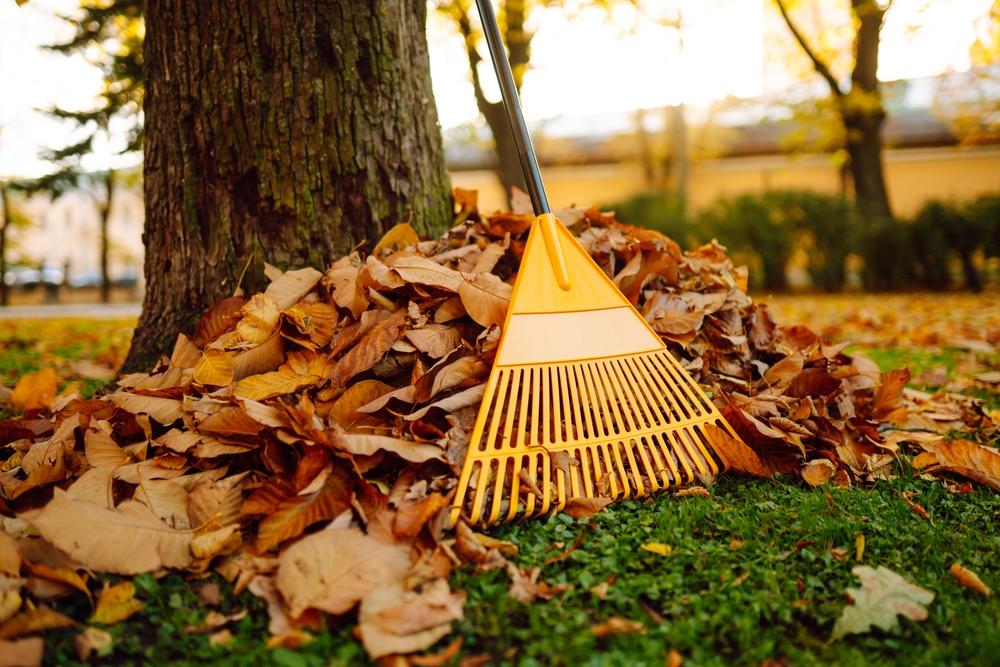September is generally a much cooler, windier month than August, with the days becoming noticeably shorter. This doesn’t, however, mean that you need to be spending less time in your garden – there are still plenty of jobs to do this month!
From reaping the rewards of harvest and planting new spring bulbs to carrying out essential maintenance on gardening equipment, it is time to make the most of the remaining warmth before autumn fully takes hold. Here are the top 10 tasks to complete in your garden in September, according to gardening expert Calum Maddock at HomeHow.co.uk:
Tend to Flowers and Crops
One of the most important garden jobs for September is to ensure that you keep on deadheading plants to extend their bloom time and keep your flowerbeds looking tidy. Doing this will also prevent plants from fading fast, as it stops them from putting all of their energy into making seeds.
This is also a great month to keep the vegetable patch going and enjoy bountiful harvests before winter. September is the ideal month for a final sowing of winter radish and is perfect for sowing hardy green leaves like pak choi, mustards, and tatsoi, which thrive in cooler weather and can be harvested through winter.
Enrich Soil
If you don’t already compost, now is the best time of year to start. September’s cutbacks make great compost material, so set up a compost bin and add pruning, leaves, and grass clippings. Cover it tightly to keep the rain out and the compost warm, and come spring, you will be able to spread a few inches over your flower beds to get them off to a great start.
If you already compost, spread a good amount over your soil as a top dressing over the next couple of months. This will provide good ground protection over winter and enrich the soil in the long term, giving all your plants a boost next spring and summer. Mulch any bare soil with compost and other materials, such as dead leaves or bark chips, to help prevent erosion, suppress and kill weeds, retain moisture, and feed the soil throughout winter.

Propagate Perennials
September is a great time for planning ahead. Look for any gaps that have formed where the hot weather has taken its toll and any perennials that have outgrown their space and need dividing and lifting. This will both refresh the plant and create new clumps to fill the gaps, allowing them to put down roots and get established before winter.
It is also the perfect month to take semi-ripe cuttings of lavender, hydrangeas, and herbs such as rosemary. Cut just beneath a leaf node, strip off excess foliage, and place cuttings around the edge of a pot filled with peat-free compost. Water well, keep out of direct sun, and in two to three months, you should see roots start to appear, ready for potting on.
Remove Spent Annuals
If you planted annuals in the spring, it is likely that by the end of summer, you will have some that have run their course and are no longer in the healthy, vibrant state they once were. Once these plants have finished blooming, you can remove them from your garden to make room for autumn flowering annuals.
Removing these plants will increase the airflow in your garden and eliminate any dying foliage that may be playing host to fungus or garden pests. Ensure that you do a thorough check for pests and diseases before adding them to your compost pile, if you plan to do so.
Plant Spring Bulbs
This month is the best time to buy and plant spring bulbs, rewarding you with a fresh set of flowers as your garden reawakens for spring. The soil in September still retains some warmth from the hotter summer months, so it is in great condition for planting spring-flowering bulbs and letting their roots establish before the harsh winter weather hits.
It is a good idea to stagger your planting over the next few months – September is great for planting narcissi, alliums, and muscari, whereas tulips prefer to be planted in slightly colder ground and can be left until November. Doing this will allow you to expect months of colour and various blooms across spring and summer.
Prune Trees and Shrubs
Another key garden job for September is to neaten up trees, hedges, and shrubs. It is especially important to give a light trim to evergreen varieties like laurel, bay, and privet to get their structure shaped up. These plants are often the main focus point in a garden during the winter months when everything else dies back, so you are going to want them to be looking their best!
A light trim is often all that is needed, as plant growth already naturally slows down at this time of year. Remove any dry, dead, or diseased stems and thin out crossing branches to ease congestion and improve air circulation in the centre of the plant.
Get Your Lawn Winter Ready
Your lawn will struggle over the cold winter months without proper preparation, so this month is the time to give it the care it so desperately needs. Start by aerating the lawn with a garden fork, then remove any thatch with a rake. Raking may reveal dead or bare patches, which can then be reseeded if needed. September is a good time for sowing new grass seed as the soil is still warm, and the increased levels of moisture create the ideal conditions for grass growth.

Looking after your lawn this month and throughout autumn is essential for healthy grass growth in the colder months. Continue to mow for now, but raise your blade slightly to keep the lawn dense and resilient – you are aiming to maintain rather than cut. While growth is still active, apply an autumn fertiliser that is rich in potassium to strengthen grass roots before winter.
Clean Patios and Decking
After a summer of entertaining family and friends, your decking and patio slabs may be looking a little worse for wear, with a buildup of dirt, algae, moss, and grime. Now is a great time to clean up these issues that have accumulated over the warmer months, and cleaning them now will help to prevent slippery surfaces in winter.
For wooden decks, remove furniture and planters before sweeping away leaves and loose debris. Use a stiff broom and decking cleaner with a bucket of warm water to clean before rinsing away and applying oil and/or sealant. Composite decking can simply be cleaned with a bucket of warm, soapy water and a sponge, and patio slabs can be approached in a similar way, or with a pressure washer.
Tackle Weeds
Through September, make sure that you remove any remaining weeds from your garden. It is important to do this now as the weeds will soon go to seed and start spreading, leading to more rapid growth next year.
Most weeds can easily be pulled out by hand, but for weeds with shallow roots, you can also use a hoe. For deeper-rooted weeds, more force may be needed, along with a weeding knife. Common problem areas that may need addressing for weeds in your garden include flowerbeds, gravel areas, and between patio slabs.
Collect Seeds
This month is great for gathering seeds from your garden to dry and store for planning next year, providing a great opportunity to increase the number of plants in the space without any additional cost. Collect seeds from hardy annuals and perennials before they are able to self-seed, only taking from healthy plants with more viable seeds.
Start collecting seeds by cutting open dried flower heads with a sharp pair of scissors. Once harvested, leave the seeds to dry thoroughly for a week or so before storing them away safely in a warm indoor environment, such as a greenhouse or kitchen windowsill, until outside conditions are appropriate for sowing.
Final Thoughts
September is a crucial month for gardening, with essential tasks including planting spring bulbs, harvesting crops, and preparing for winter. As the temperatures are typically much milder than during many other times of the year, the soil is in great condition and rich with warmth and moisture, ideal for garden work. Start preparing your garden for the coming seasons this month and reap the rewards!





